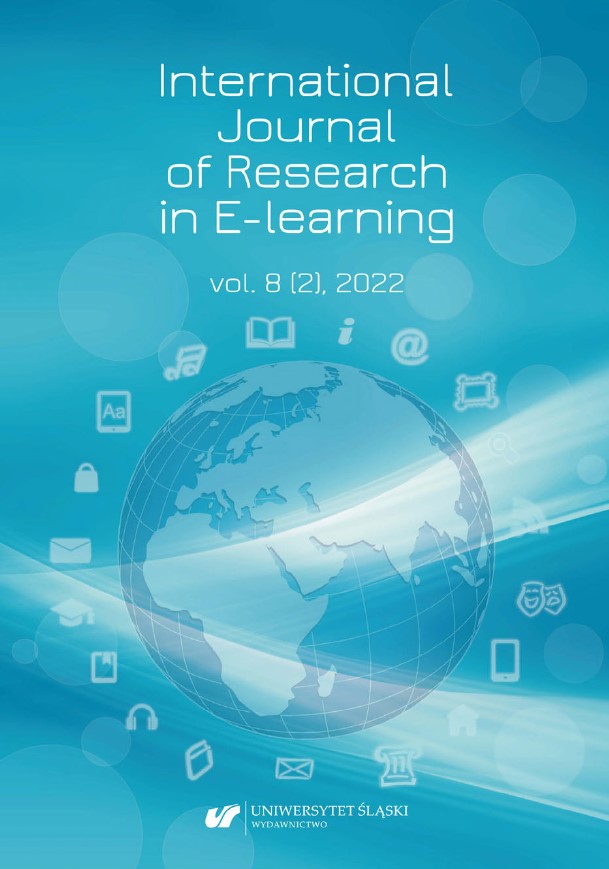Alexander, B., Ashford-Rowe, K., Barajas-Murph, N., Dobbin, G., Knott, J., McCormack, M., Pomerantz, J., Seilhamer, R., & Weber, N. (2019). Horizon report 2019 higher education edition. EDU19. https://www.learntechlib.org/p/208644/
Google Scholar
Andres, P., & Svoboda, P. (2019). Development of Digital Competences of Teachers of Social Sciences at Secondary Vocational Schools. In M. E. Auer & T. Tsiatsos (Eds.), The Challenges of the Digital Transformation in Education (pp. 720–731). Springer International Publishing. https://doi.org/10.1186/s41239-016-0009-y
Google Scholar
Aparici Marino, R., & Silva, M. (2012). Pedagogía de la interactividad. Comunicar: Revista Científica Iberoamericana de Comunicación y Educación, 38, 51–58. https://doi.org/10.3916/C38-2012-02-05
Google Scholar
Butcher, N. (2019). Marco de competencias docentes en materia de TIC UNESCO. Francia: A Organización de Las Naciones Unidas Para La Educación, La Ciencia y La Cultura. https://www.oitcinterfor.org/node/7797
Google Scholar
Cabero Almenara, J., & Martínez Gimeno, A. (2019). Las tecnologías de la información y comunicación y la formación inicial de los docentes: modelos y competencias digitales. https://doi.org/10.30827/profesorado.v23i3.9421
Google Scholar
Cucinotta, D., & Vanelli, M. (2020). WHO Declares COVID-19 a Pandemic. Acta Biomedica Atenei Parmensis, 91(1), 157–160. https://doi.org/10.23750/abm.v91i1.9397
Google Scholar
Fabrigar, L. R., Wegener, D. T., MacCallum, R. C., & Strahan, E. J. (1999). Evaluating the use of exploratory factor analysis in psychological research. Psychological Methods, 4(3), 272. https://doi.org/10.1037/1082-989X.4.3.272
Google Scholar
Fan, C., & Wang, J. (2022). Development and Validation of a Questionnaire to Measure Digital Skills of Chinese Undergraduates. Sustainability, 14(6), 3539. https://doi.org/10.3390/su14063539
Google Scholar
Felisardo, F., Audet, X. L., & Rivas, L. A. (2019). Competencias en la formación del administrador: un reto a las instituciones de enseñanza superior en Brasil. Utopía y Praxis Latinoamericana: Revista Internacional de Filosofía Iberoamericana y Teoría Social, 4, 13–24. https://produccioncientificaluz.org/index.php/utopia/article/view/29921
Google Scholar
García, M. del C. M. (2021). La formación en competencias digitales como garantía de adaptación al trabajo decente. Noticias CIELO, 5, 3.
Google Scholar
George, D., & Mallery, P. (2019). IBM SPSS statistics 26 step by step: A simple guide and reference. Routledge. https://doi.org/10.4324/9780429056765
Google Scholar
Guiot Limón, I. (2021). Uso de las TICS en la educación superior durante la Pandemia COVID-19: Ventajas y desventajas. Interconectando Saberes, 0(12), 223–227. https://doi.org/10.25009/is.v0i12.2724
Google Scholar
Guix, J. (2005). Dimensionando los hechos: la encuesta (II). Revista de Calidad Asistencial, 20(3), 154–160. https://doi.org/10.1016/S1134-282X(08)74741-9
Google Scholar
Lázaro-Cantabrana, J., Usart-Rodríguez, M., & Gisbert-Cervera, M. (2019). Assessing teacher digital competence: The construction of an instrument for measuring the knowledge of pre-service teachers. Journal of New Approaches in Educational Research (NAER Journal), 8(1), 73–78. https://doi.org/10.7821/naer.2019.1.370
Google Scholar
Mengual-Andrés, S., Roig-Vila, R., & Mira, J. B. (2016). Delphi study for the design and validation of a questionnaire about digital competences in higher education. International Journal of Educational Technology in Higher Education, 13(1), 1–11. https://doi.org/10.1186/s41239-016-0009-y
Google Scholar
Mirete Ruiz, A. B. (2016). El profesorado universitario y las TIC: análisis de su competencia digital. Ensayos: Revista de La Escuela Universitaria de Formación Del Profesorado de Albacete. https://doi.org/10.18239/ensayos.v31i1.1033
Google Scholar
Palomares Chust, A. (2015). Formularios (Google DRIVE).
Google Scholar
Prensky, M., & González Calatayud, V. (2018). Entrevista a Marc Prensky. RIITE Revista Interuniversitaria de Investigación En Tecnología Educativa, 5, 12–21. https://doi.org/10.6018/riite/2018/354791
Google Scholar
Redecker, C. (2017). European framework for the digital competence of educators: DigCompEdu. Joint Research Centre (Seville site). https://data.europa.eu/doi/10.2760/159770
Google Scholar
Rodríguez García, A. M., Trujillo Torres, J. M., & Sánchez Rodríguez, J. (2019). Impacto de la productividad científica sobre competencia digital de los futuros docentes: aproximación bibliométrica en Scopus y Web of Science. Revista Complutense de Educación. https://doi.org/10.5209/RCED.58862
Google Scholar
Rodríguez, R.-J. (2004). Ayuda SPSS Chi cuadrado. Notas metodológicas. AYUDA SPSS-CHI CUADRADO-NOTAS METODOLÓGICA, 1, 19.
Google Scholar
Sánchez Meca, J., & López Pina, J. A. (2008). El enfoque meta-analítico de generalización de la fiabilidad. https://doi.org/10.5944/ap.5.2.457
Google Scholar
Velicer, W. F., & Jackson, D. N. (1990). Component analysis versus common factor analysis: Some issues in selecting an appropriate procedure. Multivariate Behavioral Research, 25(1), 1–28. https://doi.org/10.1207/s15327906mbr2501_1
Google Scholar


 https://doi.org/10.31261/IJREL.2022.8.2.04
https://doi.org/10.31261/IJREL.2022.8.2.04
